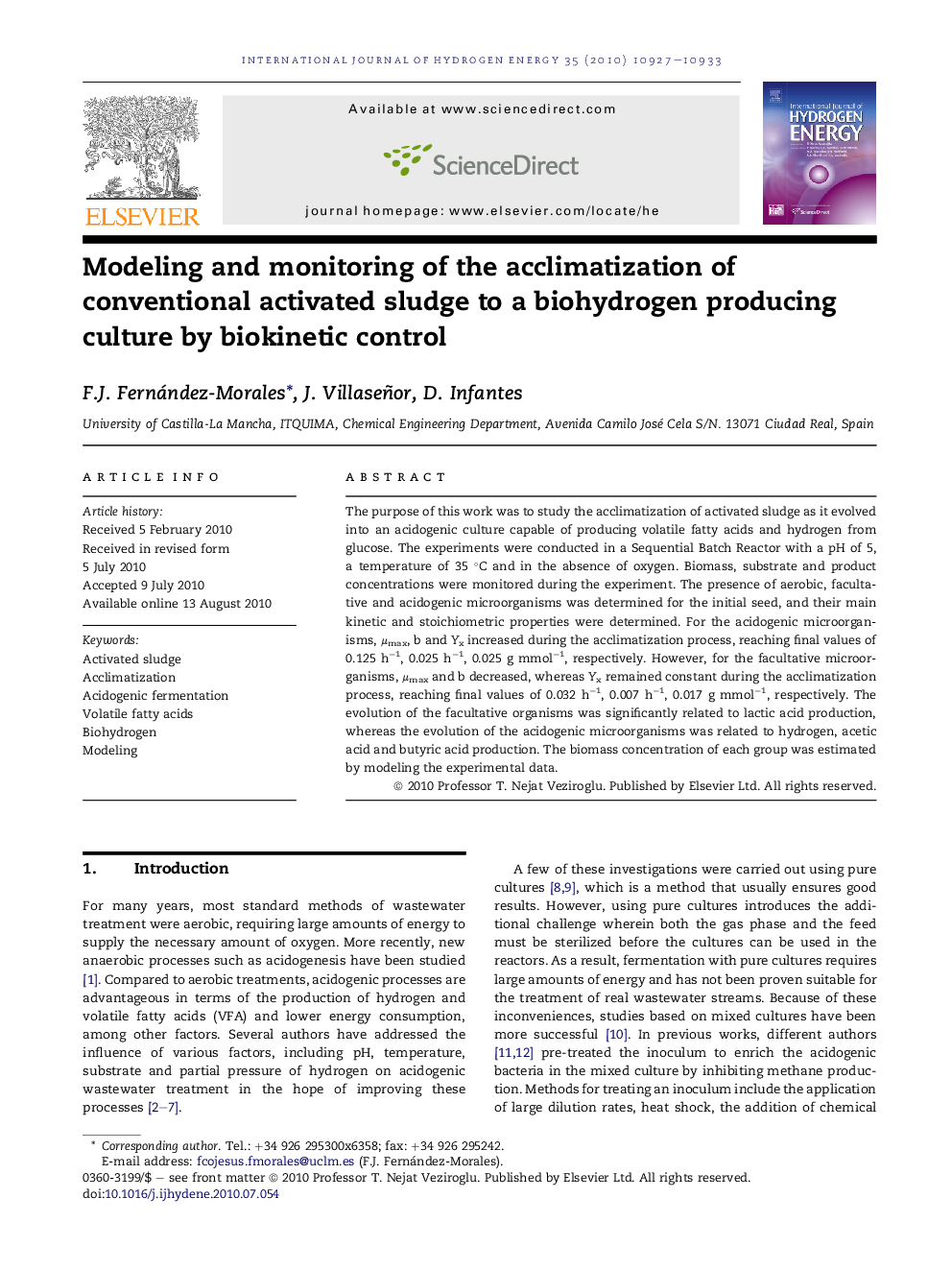| Article ID | Journal | Published Year | Pages | File Type |
|---|---|---|---|---|
| 1276687 | International Journal of Hydrogen Energy | 2010 | 7 Pages |
The purpose of this work was to study the acclimatization of activated sludge as it evolved into an acidogenic culture capable of producing volatile fatty acids and hydrogen from glucose. The experiments were conducted in a Sequential Batch Reactor with a pH of 5, a temperature of 35 °C and in the absence of oxygen. Biomass, substrate and product concentrations were monitored during the experiment. The presence of aerobic, facultative and acidogenic microorganisms was determined for the initial seed, and their main kinetic and stoichiometric properties were determined. For the acidogenic microorganisms, μmax, b and Yx increased during the acclimatization process, reaching final values of 0.125 h−1, 0.025 h−1, 0.025 g mmol−1, respectively. However, for the facultative microorganisms, μmax and b decreased, whereas Yx remained constant during the acclimatization process, reaching final values of 0.032 h−1, 0.007 h−1, 0.017 g mmol−1, respectively. The evolution of the facultative organisms was significantly related to lactic acid production, whereas the evolution of the acidogenic microorganisms was related to hydrogen, acetic acid and butyric acid production. The biomass concentration of each group was estimated by modeling the experimental data.
